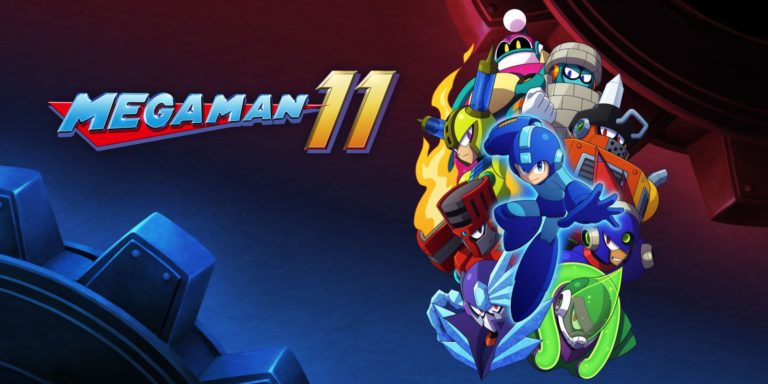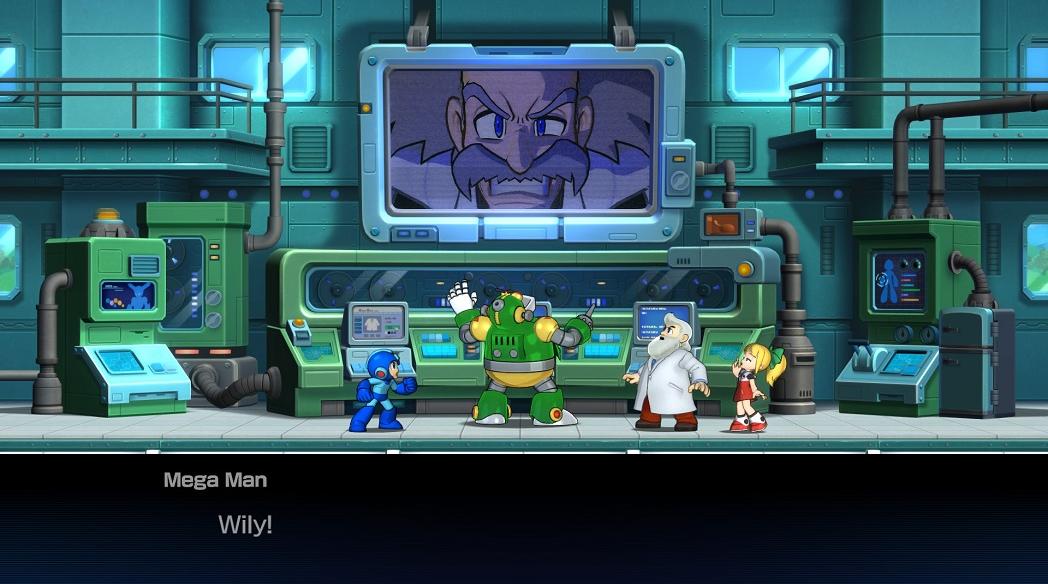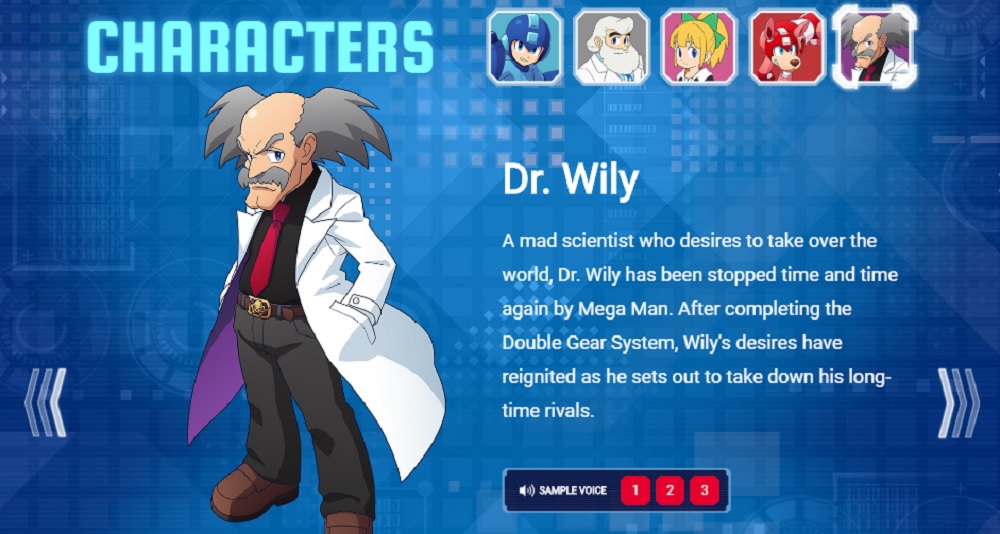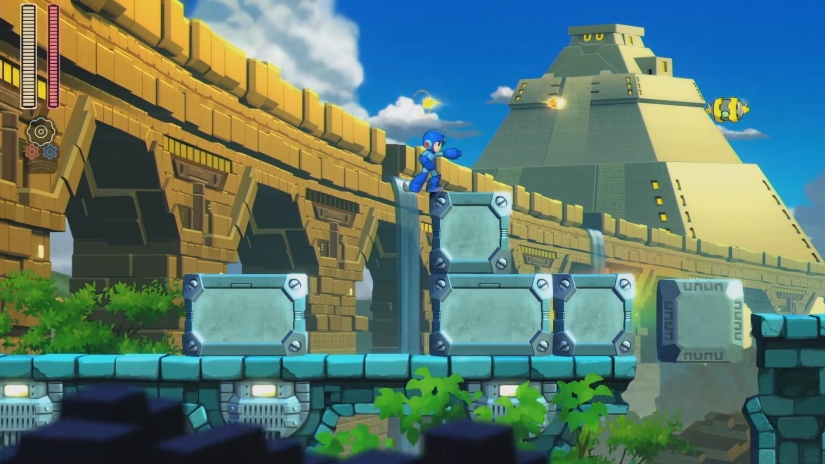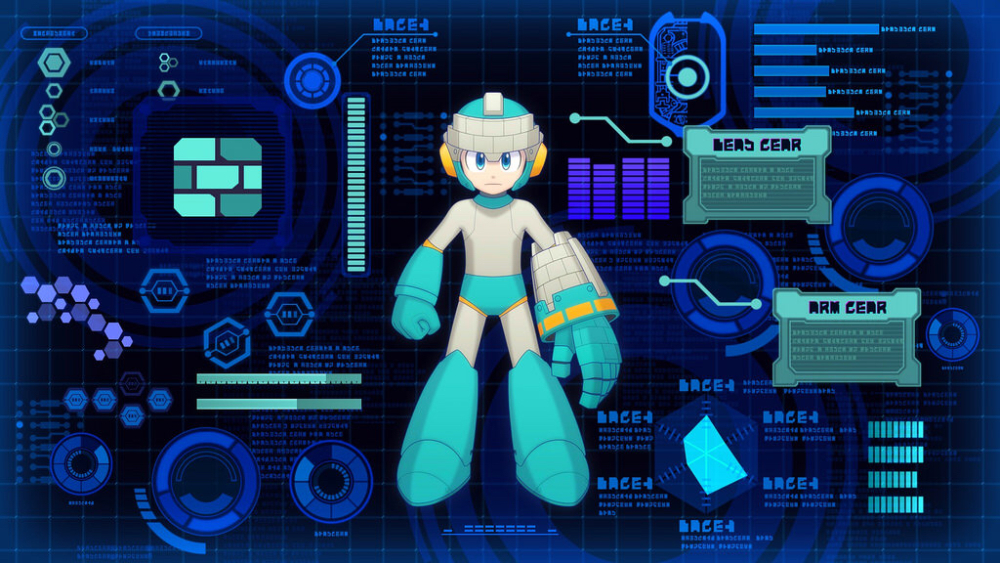It’s been years since we last had a main line Mega Man Review – The Modern Gamer’s Mega Man game. And even then, Mega Man 9 and 10 were closer with regards to paying tribute to Mega Man’s 8-bit art style than actually moving the franchise forward. Mega Man 11, on the other hand, takes a brave new leap into 2.5D territory while introducing new mechanics such as the Double Gear system. Will this new direction satisfy veterans of the franchise and introduce Mega Man to a whole new generation of players? Let’s try to answer those questions and more in our review of Mega Man 11.
Platforms: Microsoft Windows, PlayStation 4, Nintendo Switch, Xbox One
Developer: Capcom
Publisher: Capcom
Release Date: October 2, 2018
MSRP: US$29.99
Review code provided by Capcom.
Overview:
The game starts with a cutscene of a young Dr. Wily having an argument with Dr. Light. Wily insists that his double gear system, which essentially turns robots into Super Saiyans, should be at the focus of academic research. Dr. Light argues back that his research into robotic free will is what is necessary for the future of everybody. In the end, the council decides to approve Dr. Light’s research. Furious and defeated, Dr. Wily walks away from everything and vows vengeance on the council and Dr. Light.
Fast forward to today, and we see Dr. Wily up to his tricks for X amount of times. He kidnaps the robots under Dr Light’s care and plans to use them for world domination. The prototype double gear system Wily invented so many years ago is the key to defeating him this time around. Once again, it’s up to Mega Man to save the day.
Gameplay and Features:
If you’ve ever played a Mega Man game before, then you know what to expect – 8 fun yet difficult bosses and 4 Wily stages at the end of the game. But it’s the subtle differences that series veterans will immediately notice. I’m talking about how varied and colorful each stage is. I don’t know if it’s the new 2.5D perspective but there seems to be something that pops up the moment you enter a stage, and it’s not just the clever and difficult level design. Those are Mega Man staples.
Another glaring difference from past games is with the way Mega Man fights the bosses at the end of the level. Usually, it’s just a case of figuring out and boss’s weakness and punishing him with everything you’ve got. In this game, however, the introduction of the double gear system changes things up significantly. Whenever the boss’s health hits a certain level, they unleash the power of the gears. In this mode, they are usually harder to hit and it’s become my practice to just evade their attacks until the gears cool down. This adds a new level of tactics to the game. It’s like fighting a match of Street Fighter and the enemy goes Super Saiyan mid-round.
As for Mega Man himself, he still retains most of the moves we’ve grown fond of over the years. He runs, baseball slides, and charges his buster cannon for maximum damage. I like how Rush coil and Rush jet have their designated buttons now compared to having the pause the game to summon them. It’s really helped out to get out of some tricky spots. Mega Man can pick up bolts in the level to buy upgrades and items. Roll and Dr. Light handle items, while Auto hands out the upgrades. The funniest thing about the upgrades is that most become available after performing a certain action multiple times.
The double gear system allows Mega to either slow down time or power up his shots. Pressing L1 or R1 toggles both abilities. Speed gear allows for some precise movements and slows the movements of everything else around you. Power gear adds that extra UMPH to your attacks. When used with a different costume will create a more powerful version of its base attack, potentially turning the tide of battle at an instant. A fair warning, however, must be noted as using either gear for too long will overheat the system, resulting in a long cooldown and disables Mega Man’s ability to charge up his shot.
When Mega Man’s health hits critical, pressing both R1 and L1 at the same time makes use of both gears at the same time. There is no way to cancel it once it is activated, but it’s a nice ace to have in your pocket when you really need it. However, the consequences for failing to kill your target with both gears activate will result in a longer cooldown period than usual. It’s all or nothing with the double gears.
The last thing of note in the game is the Extra Modes, particularly Challenge Mode. If you’ve got some time to spare and the patience and drive to see this through, I highly recommend this mode. There are dozens of challenges spanning all the stages and beyond. Each had a specific requirement that’ll challenge your reflexes and memorization to the extreme.
The Good and the Bad:
I can’t get enough of how nice this game looks. Each level has a certain theme that enemies and level design revolves around. There are levels that require you to kill enemies in a certain way in order to progress and such. The one change that certainly caught my attention is the fact that you don’t just pallet swap when you select another costume. That’s right. For the time ever, Mega Man changes his headgear and arm gear depending on the active costume. It’s crazy, to say the least. Equally impressive is that the right analog stick can quick swap costumes on the fly. One of the best things to ever be added to the game.
The levels themselves are tough at first, but if there’s anything Mega Man has thought us over the years is that you need to accept that failure is part of the process. But once you’ve been through a stage enough times, you will feel confident enough to take them on with one hand tied behind your back. And speaking of the stage, one of the things I’ve noticed while fighting through the stages is that enemies in a particular stage give hints as to the weakness of the stage boss.
It goes without saying but I’ve probably died a couple of dozen times during the review of this game. They were mostly brought on by carelessness, and some… I just wanted to try something out that involved timing and the speed gear, and failing on an epic scale. What’s important here is that I didn’t stay down for long. That’s the best thing about playing a Mega Man game. As long as the lesson sticks, it won’t matter so much how often you die, it’s all about getting better. I would like to point out that due to my curiosity, I managed to discover some unique stage secrets. Just try to use the ice blast inside the burning forest. It’s worth it.
Final Verdict:
Veterans of the series may or may not like the gear system. In fact, any change will take some time to get used to. I think the developers knew this going forward as the entire game can be completed without ever needing to activate the gear system. And that’s all right. To me, it just means that the game can capture a whole new audience of experimental gamers alongside grizzled veterans. Mega Man, as a whole, takes pride in the clever level design and challenging gameplay. Which a lot of players can appreciate. I can’t wait to see where the next game in the series will take us. Honestly, I haven’t been this excited about the future of Mega Manin so many years.
I recommend this game to just about anyone who appreciates a good challenge. The old Mega Man formula stays strong with this entry and the new mechanics will definitely leave new players to the franchise with something positive. Be warned, however, there are many tricky parts to each stage and cheap deaths aplenty. Patience and perseverance are a must have here.
